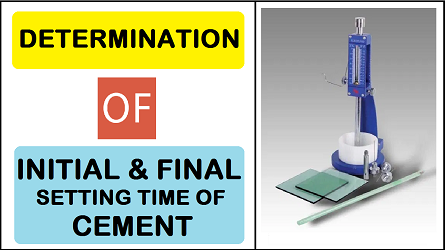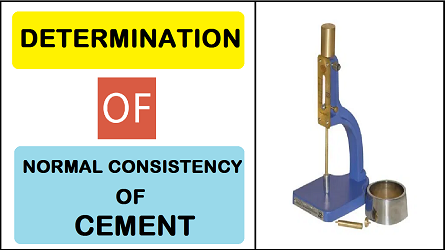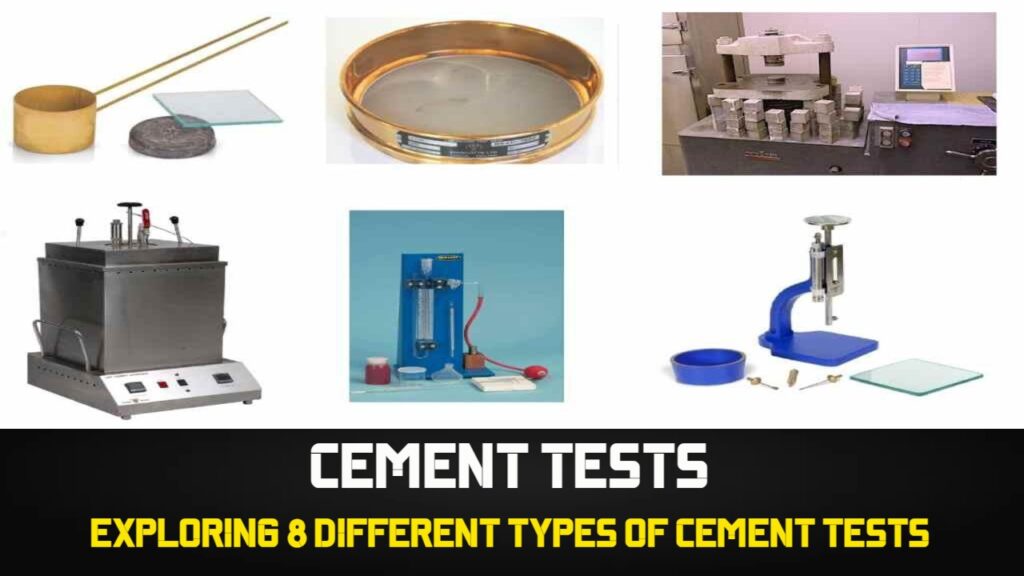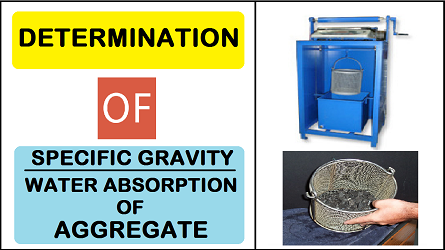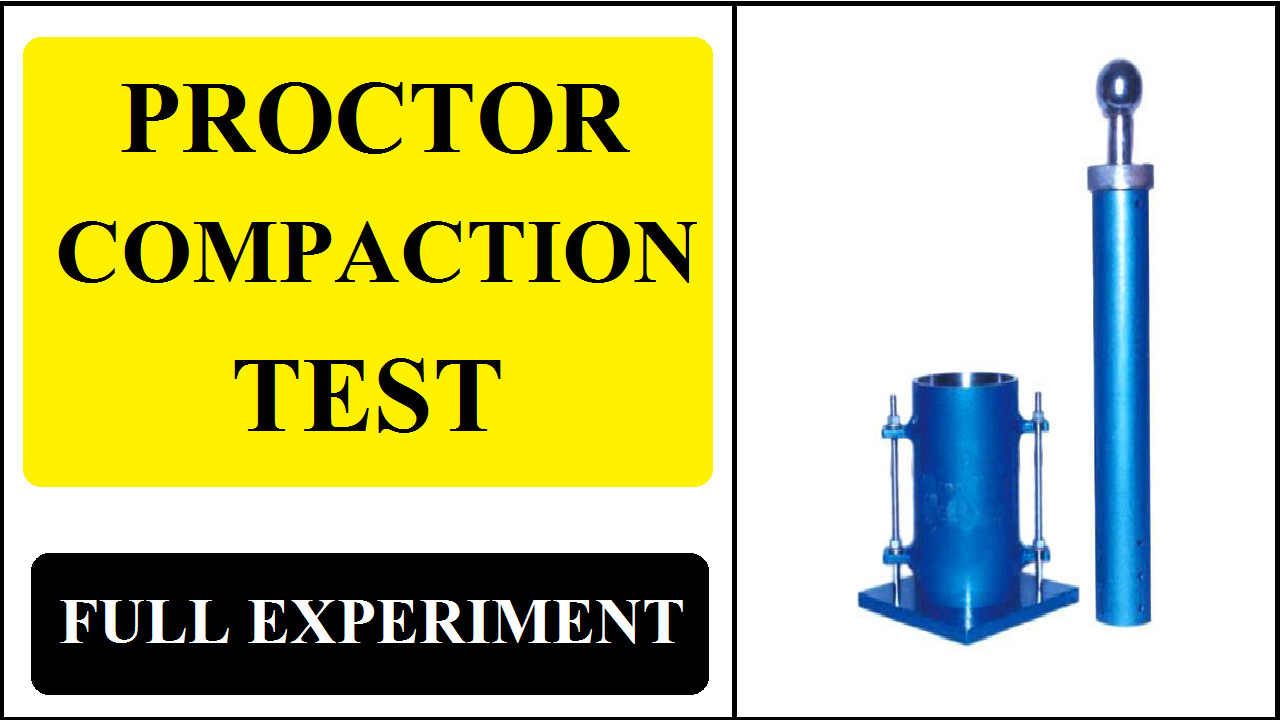
Hello Friends, This is Mukesh from Learning Technology. I will tell you in today’s post, Proctor Compaction Test – Full Experiment in a very easy way.
Contents
OBJECT OF EXPERIMENT – Proctor Compaction Test
The object of the experiment is to determine the compaction characteristics of the given soil.
THEORY – Proctor Compaction Test
The dry density γd is given by the following relation
γd = γ/1 + ω
where, γ = Bulk density of soil; ω = Moisture content of the soil
APPARATUS
1. Proctor’s standard equipment consisting of
(a) Proctor’s mould
(b) Hammer
2. Electric oven
3. Balance
4. (4.75) mm sieve
5. Steel spatula
PROCEDURE – Proctor Compaction Test
1. About 2.5 kg of loose soil passing through 4.75 mm sieve is taken.
2. The empty proctor mould is weighed in the platform balance.
3. The proctor mould is filled with the soil in three layers, each layer being compacted by 25 blows of the standard rammer of 2.6 kg dropped from a height of 31 cm above the soil. After compacting the second layer the mould is fitted with a detachable collar for compaction of the third layer. The compacted layer is then finished to a level surface just at the rim of the mould itself.
4. The mould with this soil is weighed is the platform balance. The bulk density of the soil is calculated.
5. A small amount of the compacted soil is taken in a container of known weight for determination of moisture content.
6. The dry density is calculated from the bulk density and moisture content as obtained in steps 4 and 5 respectively.
7. Steps 3 to 6 are repeated with an increased moisture content of the soil.
8. The moisture content of the soil is increased by adding water 2 – 5 % by weight of dry soil each time. Bulk density of contacted soil will increase initially with the increase in moisture content. After certain moisture content bulk density will decrease. The test is repeated until a decreasing trend in bulk density is observed.
9. From the data as obtained from the tests mentioned above moisture content vs. dry density, a curve is plotted for the soil. From the curve, optimum moisture content and maximum dry density are determined.
READ MORE
- Determination of In-Situ Density and Dry Unit Weight of Soil by Core Cutter Method
- Determination of Shear Parameters of Soil by Triaxial Test
- Determination of Liquid Limit of Soil
- Determination of Consolidation Properties of Soil
- Specific Gravity of Soil Soild by Pycnometer
- Determination of Specific Gravity & Water Absorption of Aggregate
- Determination of Specific Gravity of Sand
- Determination of Fineness of Cement by Sieving
- Determination of Initial and Final Setting Time of Cement
OBSERVATIONS AND RESULT – Proctor Compaction Test
1. Details of the proctor mould :
(a) Height = ………………..
(b) Diameter = ………………..
(c) Volume = ………………..
(d) Weight = ………………..
2. Dry density and moisture content :
| Observation No. | 1 | 2 | 3 | 4 | 5 |
| Weight of mould + compacted soil (kg) | |||||
| Weight of compacted soil (kg) | |||||
| Bulk Density (kg/cm3) | |||||
| Can No. | |||||
| Weight of empty can (W1) (gm) | |||||
| Weight of can + wet soil (W2) (gm) | |||||
| Weight of can + dry soil (W3) (gm) | |||||
| Moisture content, ω (%) = {(W2 – W3)/(W3 – W1)} x 100 | |||||
| Dry Density, γd = γ/1 + ω |
RESULT – Proctor Compaction Test
Plot dry density vs. moisture content.
From the curve, find optimum moisture content and maximum dry density.
I hope you find this information useful (Proctor Compaction Test – Full Experiment). If there is something that I have missed or I do not know, you can comment and tell me which I will try to rectify as soon as possible.
If you have liked this post of mine, then use the social link given below and share it among your friends on social media. Thanks
